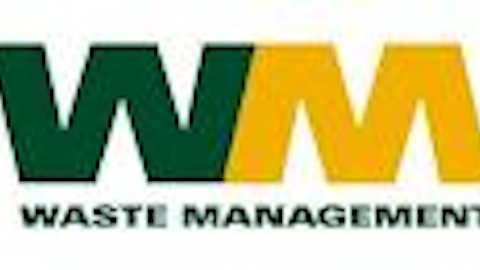Waste Management, Inc. (NYSE:WM) is not widely known by dividend investors, but its moat and consistency are remarkable.
As the largest integrated waste management company in the country, WM possesses several key advantages that have enabled it to increase its dividend for 13 consecutive years.

While WM’s operating history isn’t as long as some other companies, its economies of scale, durability, unique assets, consistent free cash flow generation, and mission-critical services make the company one of our favorite blue chip dividend stocks.
Even though Waste Management is not as popular among smart money investors as other stocks, its one of smart money’s favorite environmental services picks. A total of 31 funds from the Insider Monkey database own shares of the company, amassing around 6% of Waste Management’s outstanding stock at the end of September. Among the investors long the stock are Bill & Melinda Gates Foundation Trust, GAMCO Investors, and Millennium Management.
Business Overview
WM is the biggest integrated waste management company in North America and serves more than 21 million residential, commercial, industrial, and municipal customers. The company makes money by entering into contracts with customers to collect, transport, process, store, and dispose of their waste. WM owns a variety of assets to run its business, including landfills, truck fleets, transfer stations, recycling facilities, processing plants, and more.
2014 Revenue Mix: collection 54%, landfill 18%, transfer 9%, recycling 9%, other 10%.
2014 Collection Revenue Mix: commercial 40%, residential 30%, industrial 26%, other 4%
Business Analysis
The trash business might appear to be a commodity industry at first glance, but it actually has substantial barriers to entry. As the largest player in the market, WM also carries several additional advantages.
First, it’s worth mentioning that there really aren’t any alternatives to trash disposal today. Consumers, municipalities, and businesses need to have their waste collected and taken off-site. With the average American generating several pounds of trash per day, there is a constant need for WM’s services.
All we see is a garbage truck that picks up our garbage can and drives on, but where does our trash really go? This is when WM’s valuable, hard-to-replicate network of assets comes into play.
Waste that is not recycled or processed into forms of energy is taken to transfer stations, which consolidate waste into larger, long distance trucks. These trucks take the waste to distant disposal facilities and landfills.
WM owns 252 landfills, more than its next two largest competitors combined. The number of landfills has fallen from over 7,600 in the mid-1980s to about 1,900 in 2013. That’s over a 75% decrease in less than 30 years! Government regulations, neighborhood restrictions, high start-up costs, and environmental concerns have all played a factor in the decline of available landfills.
While the remaining landfills are larger and more efficient than their predecessors, there are only so many places that waste management companies can park trash. WM’s competitors must pay WM a “tipping fee” to deposit waste at its landfills and use its transfer stations.
WM’s ownership of key assets, dense waste collection network, and tipping fees allow it to maintain a lower cost profile than its peers. This results in more waste volumes from customers (greater route density) and higher returns on its capital.
In addition to the toll-taking advantage WM has, new entrants also have a challenging time winning enough business to justify the significant investment needed to construct for their own disposal facilities. WM and other players already have contracts with customers, which typically last anywhere from two to six years.
WM has noted that more than 80% of its commercial and industrial customers have a contract length greater than three years, and the typical customer stays with WM for 10 years. New entrants have a difficult time securing the cash flow streams necessary to build their own trash disposal network.
Furthermore, WM’s large network of recycling facilities, transfer stations, and landfills make its business more flexible to meet the needs of virtually any customer segment – municipalities, construction sites, healthcare facilities, commercial buildings, and many others. Generally speaking, customers prefer to contract with proven operators that can meet a variety of needs.
Follow Waste Management Inc (NYSE:WM)
Follow Waste Management Inc (NYSE:WM)
Receive real-time insider trading and news alerts



